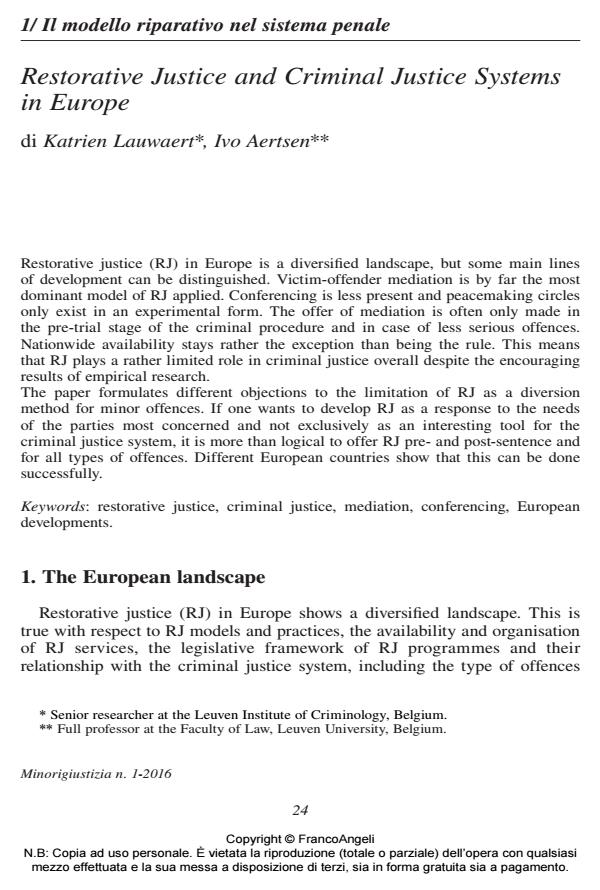Restorative Justice and Criminal Justice Systems in Europe
Journal title MINORIGIUSTIZIA
Author/s Katrien Lauwaert, Ivo Aertsen
Publishing Year 2016 Issue 2016/1
Language English Pages 9 P. 24-32 File size 86 KB
DOI 10.3280/MG2016-001003
DOI is like a bar code for intellectual property: to have more infomation
click here
Below, you can see the article first page
If you want to buy this article in PDF format, you can do it, following the instructions to buy download credits

FrancoAngeli is member of Publishers International Linking Association, Inc (PILA), a not-for-profit association which run the CrossRef service enabling links to and from online scholarly content.
Restorative justice (RJ) in Europe is a diversified landscape, but some main lines of development can be distinguished. Victim-offender mediation is by far the most dominant model of RJ applied. Conferencing is less present and peacemaking circles only exist in an experimental form. The offer of mediation is often only made in the pre-trial stage of the criminal procedure and in case of less serious offences. Nationwide availability stays rather the exception than being the rule. This means that RJ plays a rather limited role in criminal justice overall despite the encouraging results of empirical research. The paper formulates different objections to the limitation of RJ as a diversion method for minor offences. If one wants to develop RJ as a response to the needs of the parties most concerned and not exclusively as an interesting tool for the criminal justice system, it is more than logical to offer RJ pre- and post-sentence and for all types of offences. Different European countries show that this can be done successfully.
Keywords: Restorative justice, criminal justice, mediation, conferencing, European developments.
- What Pollock and Rothko may have announced and restorative justice may have to deal with: sovereign victim culture Ronnie Lippens, in Restorative Justice /2017 pp.455
DOI: 10.1080/20504721.2017.1392777
Katrien Lauwaert, Ivo Aertsen, Restorative Justice and Criminal Justice Systems in Europe in "MINORIGIUSTIZIA" 1/2016, pp 24-32, DOI: 10.3280/MG2016-001003